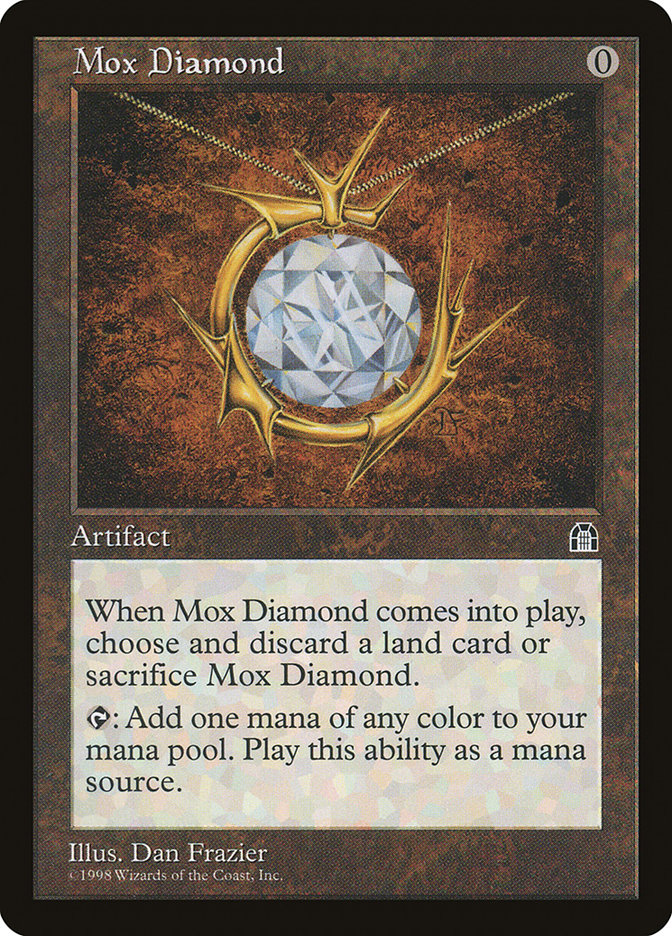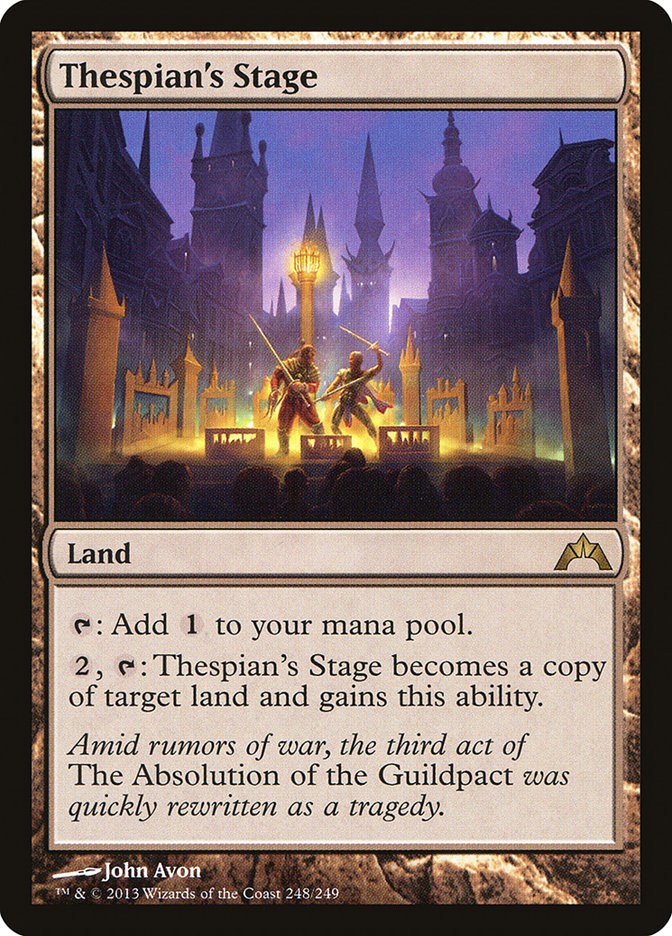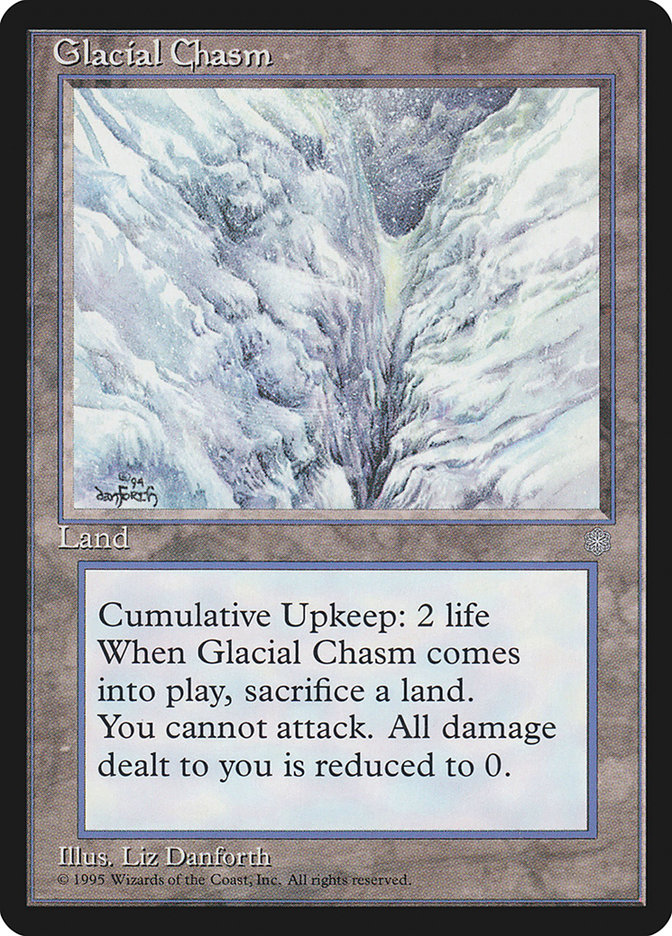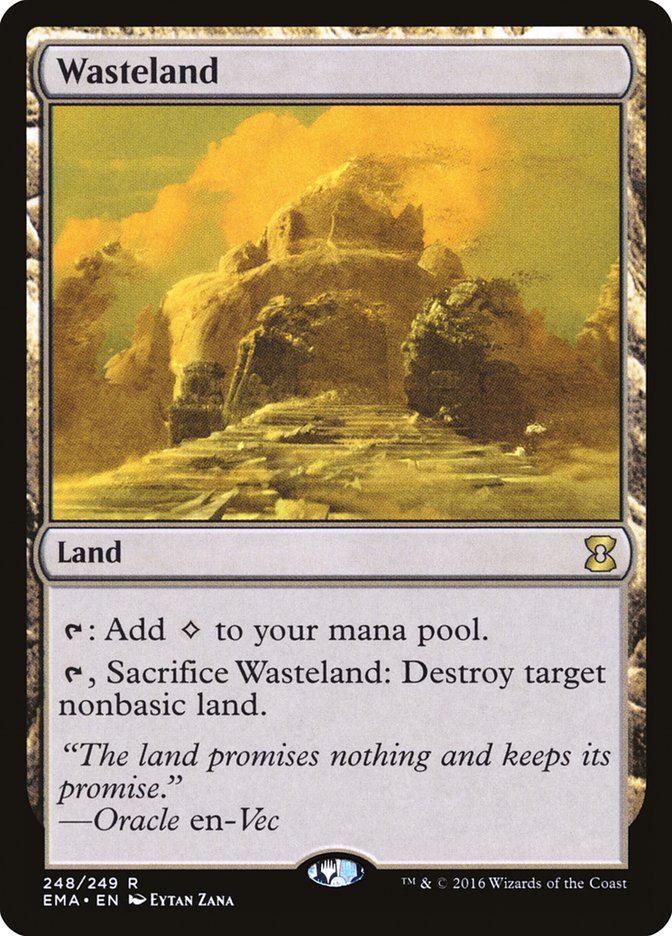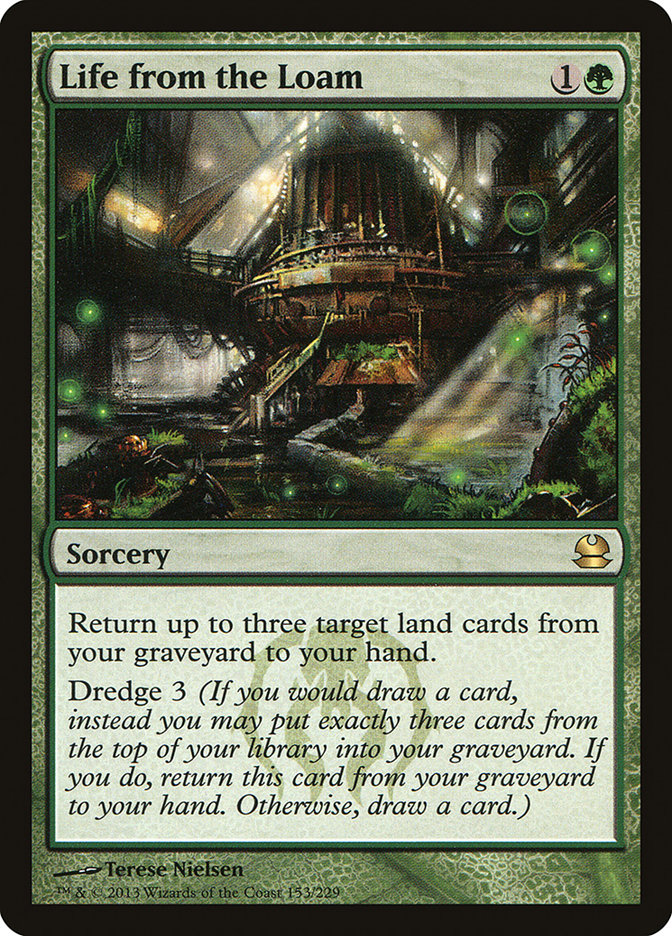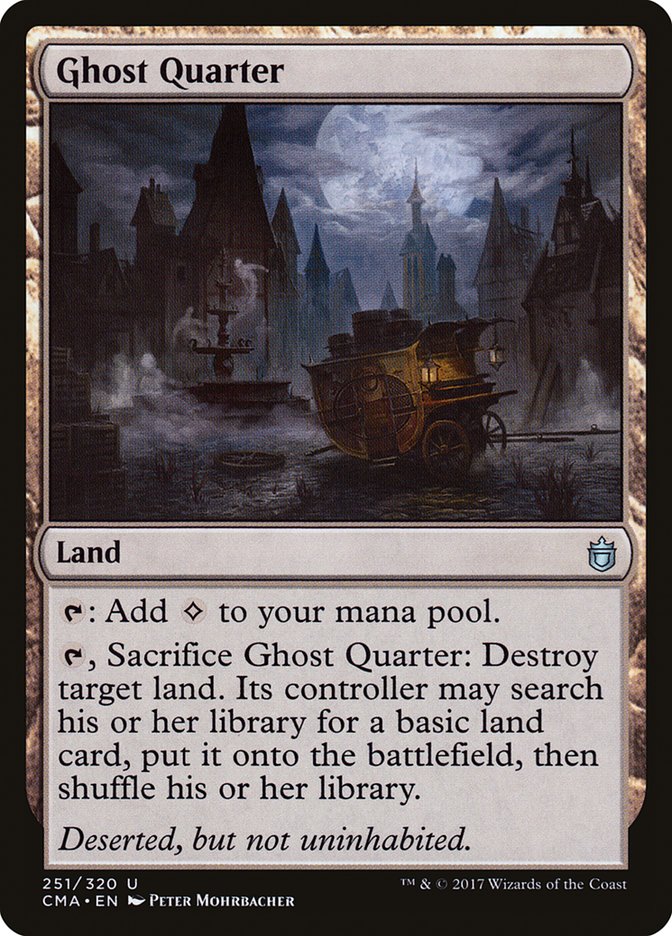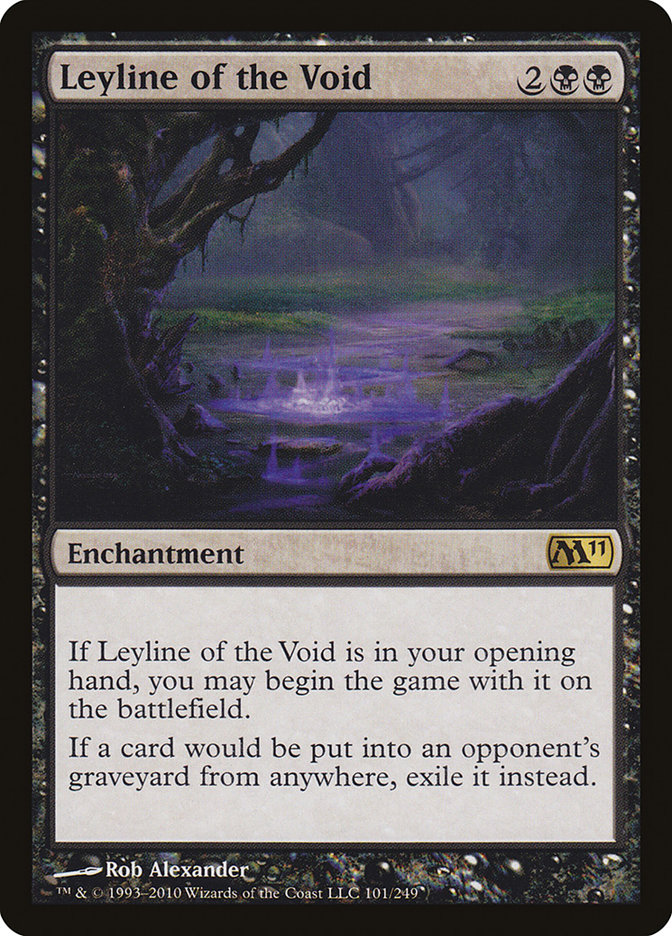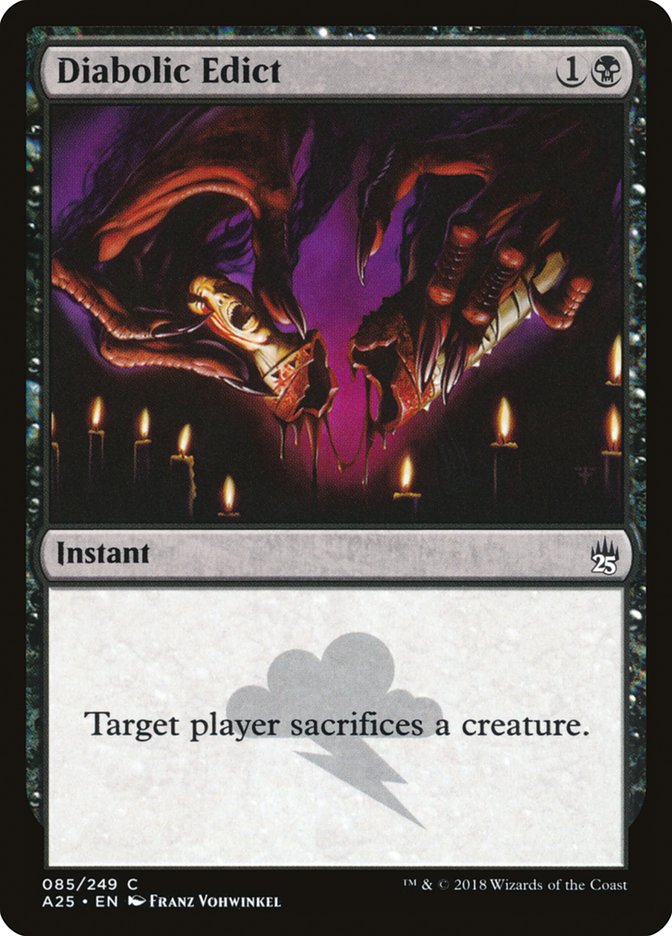I’m not an experienced Lands player. I’ve now played the deck in two
events, and prior to Grand Prix Toronto this weekend, I hadn’t played any
games outside of those events. I made a lot of game losing errors in
#GPToronto, though I’m happy that I at least noticed them fairly reliably.
In #GPSeattle, which I lost in the semifinals, I managed to avoid making as
many game-losing mistakes until the semifinals, which I also threw away.
What I’m getting at is that Lands is an incredibly strong deck–almost
every time I’ve lost with the deck, the game or match has been clearly
winnable if I played correctly, and despite making a few too many mistakes,
I’ve still done very well with the deck. I think I mostly understand it,
so, before it’s all second nature, I’d like to describe what’s going on
with this deck and how to play it.
Why Lands Is So Good
The barrier to recommending a deck without Brainstorm in Legacy is fairly
high–certainly, the burden of proof is on not playing Brainstorm, but I
think Lands is the best deck. Brainstorm is about consistency, but I’d
argue that with eight one-mana tutors in Gamble and Crop Rotation, as well
as an engine based around Life from the Loam, that Lands is more consistent
than any Brainstorm deck. It’s very rare that you can’t find precisely what
you want in fairly short order. On top of that, Lands is better at breaking
fundamental rules of Magic than other decks–I’ve written about how Mox
Opal is the most powerful card in Modern, and a big part of the reason why
I play Lantern in Modern is just that it’s a deck that gets to use Mox
Opal; however, Mox Diamond, especially in conjunction with Life from the
Loam, is even better. It may seem like acceleration like that might not be
at its best in a deck whose curve stops at two, but Magic has a way of
making mana matter, and that kind of free mana boost is an easy way to win
games.
Maybe I’m explaining this wrong. Good cards by themselves aren’t what make
a good deck. Lands is good because of the things that it does well, but it
can be hard to figure out what a deck does well when basically every card
in the deck is just about getting lands on the battlefield, so let me start
with my decklist and then explain what this deck actually does:
Lands (36)
- 1 Forest
- 1 Wooded Foothills
- 4 Wasteland
- 2 Taiga
- 1 The Tabernacle at Pendrell Vale
- 1 Karakas
- 1 Ancient Tomb
- 1 Barbarian Ring
- 2 Maze of Ith
- 1 Tranquil Thicket
- 1 Glacial Chasm
- 4 Ghost Quarter
- 4 Dark Depths
- 4 Grove of the Burnwillows
- 1 Misty Rainforest
- 1 Verdant Catacombs
- 1 Bojuka Bog
- 4 Thespian's Stage
- 1 Sheltered Thicket
Spells (24)

Fundamentally, this is a Dark Depths combo deck. The fact that the shell
existed before Thespian’s Stage was printed and existed as a prison deck
kind of masks that fact, but for the most part, Lands plays primarily as a
combo deck. In context of Legacy, I’m not sure it counts as a “fast” combo
deck, but it’s faster than it looks–turn two Marit Lage isn’t that
uncommon. If your opening hand contains any two of Thespian’s Stage, Dark
Depths, Gamble, and Crop Rotation, as long as it’s not two copies of either
land, there’s a very good chance you can make Marit Lage in the first few
turns.
That said, Lands certainly isn’t a one-dimensional combo deck; it can play
several different game plans very well. Specifically: combo, control, and
prison. Marit Lage is the combo strategy.
The control strategy is centered around answering creatures, which the deck
has a lot of tools for: Punishing Fire, Maze of Ith, Glacial Chasm, The
Tabernacle at Pendrell Vale, Barbarian Ring, and Karakas, with Drop of
Honey and Molten Vortex in the sideboard (many people play Molten Vortex
main instead of Barbarian Ring). Punishing Fire with Grove of the
Burnwillows is very straightforward, and a great answer to Deathrite Shaman
and Delver of Secrets, both of which are extremely common in Legacy, and
Deathrite Shaman would otherwise be a huge problem for Lands. Maze of Ith
is a great answer to Gurmag Angler in particular, because Punishing Fire is
such a bad answer to it. Tabernacle is good at stopping opponents from
going wide, which makes it particularly good in conjunction with Maze of
Ith, but you can also potentially use it to kill all your opponent’s
creatures if you can use Ghost Quarter and Wasteland to destroy all of
their lands.
Glacial Chasm is kind of its own thing and arguably more a part of the
deck’s prism aspect since it’s a weird card and maybe the one might
opponents have had to read most often. On its surface, it’s a card that you
play when your opponent’s about to kill you to buy a little extra time,
before you must lose it because of its cumulative upkeep. In conjunction
with Life from the Loam, you can play it every turn, but because you have
to sacrifice another land when you play it, you’ll have to stop when you
run out of other lands since you have to use your one land per turn on this
and then let it die. However, if you have Exploration as well, you can keep
playing another land with it and go forever.
The problem with this “lock” is that each turn, you’re vulnerable to burn
spells after you let Glacial Chasm die in your upkeep and before replaying
it in your main phase. However, with Thespian’s Stage you can avoid ever
putting your shields down. In your upkeep, with Glacial Chasm’s sacrifice
on the stack, use Thespian’s Stage to copy it, then let it die, then get it
back and play it again. Better still, if you have two Thespian’s Stages,
you can play a second one and then on the following turn copy the first
Thespian’s Stage that’s copied a Glacial Chasm, then let that Stage die,
then return it with Life from the Loam and replay it, then copy the second
Thespian’s Stage in the next turn’s upkeep. In this loop, you never need to
sacrifice another land, so you don’t need Exploration to go forever, and if
you do have Exploration, you can continue making progress by playing other
lands.
The other prison element of the deck is simply the mana denial plan.
Between Wasteland, Ghost Quarter, and Life from the Loam, you can lock your
opponent out of getting a second land on the battlefield fairly quickly and
easily, especially if they have no or few basic lands in their deck. It’s
easiest to get on this kind of game plan if your hand has one of those
lands, Life from the Loam, and ideally Exploration. It’s worth noting that
this strategy is extremely weak to Deathrite Shaman, so I would try to
avoid keeping a hand where this was my only plan unless the hand had
Punishing Fire or Gamble so that I could deal with Deathrite Shaman if I
had to.
Those are the fundamental strategies the deck is capable of and the things
it does well. In playing the deck, you need to know what kinds of hands to
keep and how to choose your plan.
Sample Hands
When deciding whether to keep a hand, it’s important to highly prioritize
Mox Diamond and Exploration; both were only incidentally mentioned in the
deck’s explicit game plans, but Legacy is a fast format and these are the
cards that let you keep up or get ahead. They’re what makes the
functionality of the deck unfair rather than average. Let me look at a few
examples just by literally shuffling up my deck and drawing some sample
hands:
Hand one:


At first glance I thought this was mulligan because it doesn’t have green
mana, but you can play Barbarian Ring and Gamble, so let’s consider
further.
You play Barbarian Ring and Gamble, you get Mox Diamond, there are six
cards in your hand. If you discard Mox Diamond, you have a turn or two to
draw green mana or you’ll probably lose; if you don’t discard Mox Diamond
your hand is pretty good. If you discard Life from the Loam, you’re in
great shape, you can play Mox Diamond, Crop Rotation away Barbarian Ring
for Thespian’s Stage, and dredge Life from the Loam, and you’ll make a
turn-three Marit Lage if you want, with Wasteland and Life from the Loam to
protect it, and you’ll have Life from the Loam digging for additional tools
from turn two.
If you discard either land instead of Life from the Loam, things proceed
the same way, except you have a draw step instead of a dredge to work with,
which is honestly about as good. If you discard Manabond, you don’t have
the ability to use Life from the Loam to construct a hand that can explode
with Manabond, but because our green mana is kind of committed for Loam
anyway and we already have Mox Diamond, this really isn’t necessary (it’s
disappointing, but not tragic). The second worst case is you discard Crop
Rotation and now you don’t have access to Thespian’s Stage, so you can’t
make a fast Marit Lage, but you do have Manabond, Life from the Loam,
Wasteland, and a two-mana-on-turn-one start, so you have a strong mana
denial early game that’s very likely to dredge into a Thespian’s Stage in
the next few turns.
All in all, this is a strong hand. It’s soft to a Force of Will on Gamble,
but honestly, I think most opponents let it resolve a decent portion of the
time even when they have the Force of Will.
Hand two:


This is an obvious mulligan with no redeeming qualities.
Six-card hand:

On six cards, I think I keep this. At first glance, it looks a little slow;
we have the combo and the mana to activate it, but without acceleration,
that’s a turn-four 20/20 which is very likely too slow. We have a Maze of
Ith to protect us, but that also slows us down. However, importantly, Crop
Rotation speeds us up by a turn because we can get Ancient Tomb, so this is
actually a turn-three 20/20, which is a lot better although things get
pretty grim if the Crop Rotation is countered. Still, given that, I’d be
disinclined to go to five. After keeping, my top card is Mox Diamond, which
I easily scry to the top. This doesn’t make it a turn-two 20/20, but it’s a
much safer turn three, and you can even make use of the Maze of Ith if you
want (and then Crop Rotation it away).
Hand Three:


This is a weird hand. You can win some games off Wastelands and Tabernacle,
and you have the combo, but you have no colored mana. Without knowing the
matchup, I’d probably send this back; it literally executes all your plans,
but I think it might just do them too slowly.
Six cards:

This hand doesn’t do much; it has Punishing Fire + Grove of the Burnwillows
but none of the other other cards really do anything. However, if the top
of the deck is Thespian’s Stage or Crop Rotation, this is a turn-two 20/20.
Given that we get a scry and Gamble (for Life from the Loam) or Life from
the Loam are also pretty good draws, I think I keep this. Top card: Ghost
Quarter, which I scry to the bottom. After that my first two draws were
Barbarian Ring, then Thespian’s Stage, so I think this draw would actually
work out pretty well.
Hand four:


This hand has no parts of the combo and no Life from the Loam, so it’s
pretty far from winning a game. That said, I’d actually keep it anyway
because The Tabernacle at Pendrell Vale and Wasteland are extremely strong
together when paired with Exploration, and this hand is a Life from the
Loam or Gamble away from locking most people out.
—
So where does it get tricky?
Well, to start with, any time your deck has eight one-mana tutors, you’re
just going to have a lot of options, and in general, sequencing is hardest
with decks where all the cards have similar casting costs because it means
more of your plays need to be considered directly against each other rather
than simply casting the spell you have enough mana for by default. The
biggest strategic decision point is just deciding which of your game plans
you’re using and when and whether to switch, but tactically, there are a
lot of questions about playing around counterspells, which lands to
destroy, and sequencing your land plays that can always get tricky. There
are some specific things to watch out for like “Don’t play Dark Depths too
early if your opponent might have Thespian’s Stage, because then they can
make a 20/20 off your Dark Depths” that you kind of do naturally anyway
because Dark Depths doesn’t do anything on the battlefield.
Thespian’s Stage itself is kind of a tricky card–it’s easy to forget that
it keeps the ability to copy lands when it copies a land, so you actually
want to copy something else with it at any time you’re not doing anything
more important even if you want to use it to make Marit Lage because it can
still do that. If you copy a basic land, it becomes basic, but can still
copy other things, which is nice to know since you can theoretically do
something like counter a Wasteland activation on your untapped Thespian’s
Stage by copying a basic in response.
One of the most consistently challenging tactical questions is just when to
make a 20/20 once you have the ability to. A few common considerations: If
you pass the turn, your opponent might play a Wasteland, which you’ll need
to destroy with your own Wasteland or Ghost Quarter before you can
successfully make Marit Lage. If you do it on your turn, your opponent can
use sorcery speed answers to answer it (Terminus, Jace, the Mind Sculptor,
Liliana of the Veil, or they could play Karakas). Based on what your
opponent’s playing, you just have to figure out which answers they’re most
likely to have.
Some Final Notes On Sideboarding
In general, the sideboard cards you’re afraid of are Blood Moon/Back to
Basics, graveyard hate, especially Leyline of the Void and Surgical
Extraction, Price of Progress, and tuning elements like Diabolic Edict.
Your sideboarding is pretty simple. Tireless Tracker is a good hedge
against your opponent using Surgical Extraction to break up what you’re
doing because it gives you another angle of attack that it’s hard for them
to prepare for since it requires cards that are otherwise bad against you.
Krosan Grip is a good catchall for most things people will try to do
against you. Anti-creature cards come in against creatures, anti-combo
cards come in against combo.
You’ll almost always cut Manabond because you’re bringing in expensive
spells that you want to keep in your hand most of the time. You’ll usually
have a good number of lands that don’t do anything in the matchup you can
cut; some combination of Bojuka Bog, Karakas, Glacial Chasm, Maze of Ith,
Tabernacle, and I’ll sometimes trim Ghost Quarter. Against blue decks I’ll
usually shave Crop Rotation and Dark Depths and focus on my other game
plans.



